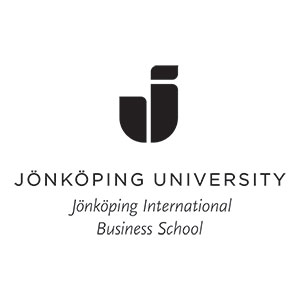How to manage internal collaboration in New Product Development (NPD) projects

Photo: Husqvarna Group
The Master thesis of Ariany Ribera Bejarano and Mauricio Guzman Gili investigates a topic that adds to our knowledge about how to improve product development processes in cross-functional teams. They distilled knowledge based on the case study of a top Swedish multinational corporation, the Husqvarna Group, which has more than 300 years of experience in new product development. The process they draw is a useful guideline for practitioners.
Introducing new products or services into different markets remains a challenge since it requires a smooth interaction between members of different cross-functional teams. Our research had as main objective to understand how such cross-functional teams build collaboration to develop and deliver new products to the market on time.
The study was focused on cross-functional teams at Husqvarna Group, a leading global producer of outdoor power products for forest, park and garden care with a long history of innovation and where most of the new product development projects are managed following the well known stage-gate model.
The empirical data were taken from thirteen interviews with experienced managers, reviewed documentation, and collected observations. When analyzing the data and combining it with a solid theoretical background, we found not only additional meaning to existing theoretical concepts but also identified managerial practices related to collaboration that can be considered by organizations when developing new products. In this study, internal collaboration was divided into three main streams: information sharing, incentive alignment, and joint-decision making.
First, information sharing refers to the distributions of useful information for systems, people or units in the organization. The main elements founded in this research related to this factor were transparency since it builds trust in interpersonal relationships facilitating collaboration among team members, and informal and formal communication as a way to share and store knowledge and do not miss critical information that can impact the outcome of the project. Then, incentive alignment implies the fact that all team members of a project should understand the goals and be aligned on the deliverables. In this regards, to ensure that the team can compromise and deliver what is expected, we found out that the project needs: to define clearly the roles and responsibilities (R&R) of each member, to develop a detailed work breakdown structure (WBS) with manageable tasks and lead times and to have a defined change process, so everyone gets informed in the right time and can take measurements when there are changes in the scope of the project and or in the technical part of the product. Finally, joint-decision making means that all members should be involved and accountable for the decisions that are taken during the whole project. Thus, we identified that the alignment during the decision-making in the pre-study, stages and gates is crucial to build the collaboration of the cross-functional teams due to the fact that it creates a sense of team effort and helps to come to future agreements.
To conclude, our study raises special emphasis on the pre-study phase and its impact on the time performance of the NPD projects, as well as its relevance for being a phase where teams start to build collaboration. This means the early interaction of the cross-functional team can bring several benefits. It contributes with inputs to establish proper alignment, mitigate risks, and set a communication plan from the beginning of the project.
The following figure shows how all the practices mentioned can be executed in a new product development project to ensure strong collaboration and deliver new products to the market on time.
 Förstora bilden
Förstora bildenFigure 1: Internal Collaboration in NPD Projects
[1] Simatupang, T. M., & Sridharan, R. (2005). The collaboration index: A measure for supply chain collaboration. International Journal of Physical Distribution & Logistics Management, 35(1), 44–62.
[2] Um, K.-H., & Kim, S.-M. (2018). Collaboration and Opportunism as Mediators of the Relationship Between NPD Project Uncertainty and NPD Project Performance. International Journal of Project Management, 36(4), 659–672.
Authors

Ariany Ribera Bejarano
https://www.linkedin.com/in/arianyriberabejarano/
Mauricio Guzman Gili
https://www.linkedin.com/in/maugugi/
Detta är en bloggtext. Det är skribenten som står för åsikterna som förs fram i texten, inte Jönköping University.





